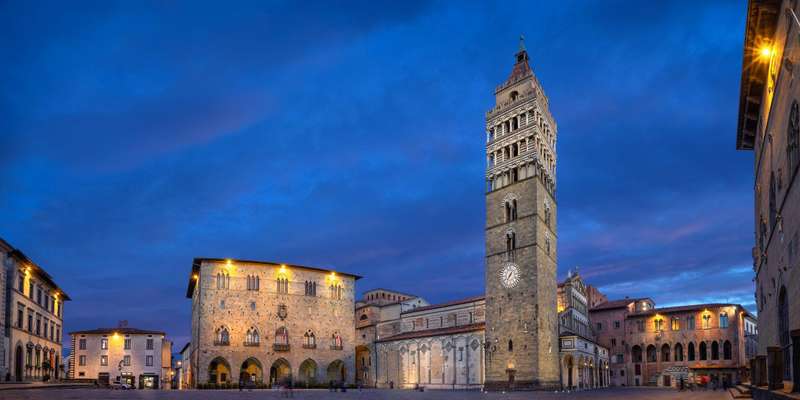- Home
- Useful Tips
- Visiting Pistoia's Palazzo dei...
Many travelers breeze through Pistoia's cathedral square without realizing the artistic treasure hiding in plain sight. Palazzo dei Vescovi, the 11th-century Bishop's Palace, holds centuries of history within its walls – but visitors often miss its most remarkable features or waste precious vacation time navigating unclear opening hours. Recent tourism data shows 60% of day-trippers spend less than 20 minutes here, unaware of the underground archaeological museum or the rare medieval fresco cycle in the Cappella di San Jacopo. The frustration mounts when you've allocated limited Tuscan itinerary time to cultural sites, only to find yourself guessing at significance or battling crowds during peak hours. This architectural time capsule deserves more than a hurried glance – its layered history from Roman foundations to Renaissance modifications tells Pistoia's story in ways guidebooks rarely capture.


Navigating the palace's complex opening hours without wasting a day
The palazzo's irregular schedule proves challenging even for seasoned travelers, with seasonal variations and occasional closures for restoration work. Unlike Florence's major museums that maintain consistent hours year-round, this local gem operates on a more nuanced timetable. Your best strategy involves checking the Diocese of Pistoia's cultural calendar two weeks before arrival, as last-minute changes frequently occur. Mid-morning visits (10:30 AM onward) typically avoid school groups that arrive at opening time, while Wednesday afternoons see fewer visitors than weekends. Should you find the doors unexpectedly locked, the adjacent Cathedral Treasury often makes for a worthwhile alternative with overlapping operating hours. Locals suggest the secret sweet spot – late afternoon on Thursdays when cruise ship day-trippers have returned to Livorno and the soft light perfectly illuminates the chapel's 13th-century frescoes.
Decoding the architectural layers from crypt to rooftop
What appears as a unified Renaissance facade actually contains eight centuries of architectural evolution. Start your exploration in the underground archaeological area where visible Roman foundations and medieval artifacts reveal Pistoia's ancient origins. The ground floor loggia, added during 15th-century renovations, showcases the transition from Gothic to Renaissance styles – notice how the columns' proportions differ from those in Florence's more famous palaces. Don't rush past the seemingly plain stairwell; its worn stone steps bear grooves from centuries of bishop's staffs tapping their ascent. The real masterpiece awaits upstairs in the Cappella di San Jacopo, where the recently restored fresco cycle depicts biblical scenes with surprising emotional depth for medieval art. A little-known rooftop access (available through guided tours) offers panoramic views comparing Pistoia's skyline with the distant Apennines.
Understanding the frescoes' hidden symbolism like an art historian
The palazzo's medieval artworks often baffle visitors accustomed to Renaissance clarity. The Cappella di San Jacopo's 13th-century fresco cycle employs visual language that made perfect sense to worshippers 700 years ago but requires explanation today. Look for the unusual depiction of Christ's baptism where the Jordan River flows upward – a theological statement about divine intervention, not artistic error. The martyrdom scenes use specific color symbolism: Saint Jacopo's golden robe represents spiritual wealth, while his executioner's green tunic signifies earthly ignorance. Local docents point out fascinating details like the hidden self-portrait of the artist near the chapel's northeast corner, a rare medieval example of artistic signature. These narratives unfold across multiple registers on the walls, designed to be 'read' from bottom to top as a spiritual ascent.
Combining your visit with Pistoia's other hidden attractions
Smart travelers leverage the palazzo's central location to create an efficient cultural circuit. Just 200 meters away, the lesser-known San Giovanni Fuorcivitas church displays Giovanni Pisano's magnificent pulpit – a masterpiece often overshadowed by his father's work in Pisa. Time your palace exit for 12:30 PM to catch the traditional vegetable vendors in Piazza della Sala, where you can sample local delicacies like mortadella di Prato. Those interested in ecclesiastical history should note the Diocesan Museum's combined ticket option, providing access to three additional sacred art collections at a 30% discount. For an unforgettable sunset experience, follow the locals' path up Via del Lastrone to the panoramic Giardino di Via degli Arcipreti, offering postcard-perfect views of the palace's crenellated towers bathed in golden light.
